Content

Accounts payable are typically recorded upon receipt of an invoice based on the payment terms both parties agreed to when initiating the transaction. When a finance team receives a valid bill for goods and services, it is recorded as a journal entry and posted to the general ledger as an expense. The balance sheet shows the total amount of accounts payable, but it does not list individual transactions.
Terms typically range from net 30 — that is, customers agree to pay invoices within 30 days — to net 60 or even net 90, which a company may choose to accept to secure a contract. However, for large orders, a company may ask for a deposit up front, especially if the product is made to order. Services firms also frequently bill some portion of their fees up front. A key metric for finance teams to track is days payable outstanding .
Accounts payable on the other hand are a liability account, representing money that you owe another business. Peggy James is a CPA with over 9 years of experience in accounting and finance, including corporate, nonprofit, and personal finance environments. She most recently worked at Duke University and is the owner of Peggy James, CPA, PLLC, serving small businesses, nonprofits, solopreneurs, freelancers, and individuals. Conversely, a negative number indicates a cash flow increase of the same amount. The CFS’s starting point is Net Profit, which increases although there are no cash transactions; this is unacceptable. Therefore, deduct any net profit or indirect sales that do not involve such transactions.
How We Make Money
It is one of a series of accounting transactions dealing with the billing of a customer for goods and services that the customer has ordered. Accounts receivable is an asset which is the result of accrual accounting. In this case, the firm has delivered products or rendered services , but no cash has been received, as the firm is allowing the customer to pay at a later point in time. Companies record accounts receivable as assets on their balance sheets since there is a legal obligation for the customer to pay the debt.
- The difference between accounts receivable and accounts payable is pretty simple.
- Accounts receivable is a current asset on the balance sheet because all of those promises will soon convert to cash.
- Other common payment terms include Net 45, Net 60, and 30 days end of month.
- Customers are more likely to buy items if they can pay for them at a later date.
- Accordingly, the information provided should not be relied upon as a substitute for independent research.
- The funds collected through your accounts receivable process are the food that fuels your company’s livelihood.
- Early payment programs can provide considerable flexibility when it comes to choosing which invoices to finance.
Many or all of the products featured here are from our partners who compensate us. This may influence which products we write about and where and how the product appears on a page. For each business day that passes, a certain amount of fees become earned and non-refundable. Taking on this loss and being stuck with 50,000 units of custom books could be tragic to the seller. If you’re thinking about the future growth prospects of a company, make sure to take a look at its accounts receivable book. GoCardless is authorised by the Financial Conduct Authority under the Payment Services Regulations 2017, registration number , for the provision of payment services. Even after you’ve written off the debt, keep sending innvoice reminders.
Accountingtools
Account receivables are classified as current assets assuming that they are due within one year. The ending balance on the trial balance sheet for accounts receivable is always debit. A receivable is money owed to a business by its clients and shown on its balance sheet as an asset.
What does the rise of patient as payer mean for the revenue cycle team managing accounts receivable?https://t.co/ObCvawE5w7#PatientFinancialExperience #PatientLiability #InnovateRCM #RevCycle #HealthcareFinance #PatientExperience #RCM #PatientBilling #VisitPay #ForGood
— VisitPay (@VisitPay) October 17, 2019
For certain transactions, a customer may receive a small discount for paying the amount due to the company early. The difference between accounts receivable and accounts payable is pretty simple. A/R is an asset because it represents the money that is owed to you for credit sales that you have sold. Accounts payable, on the other hand, is a liability because it represents the amount of money you owe other companies for the goods and services you purchased from them on credit. For tax reporting purposes, a general provision for bad debts is not an allowable deduction from profit – a business can only get relief for specific debtors that have gone bad.
Presentation Of Accounts Receivable
Let’s say that your company just sold $2,000 worth of product to a customer. If you have no other Accounts Receivables, your balance sheet would add $2,000 to the Accounts Receivable line. When the customer actually pays the $2,000, the $2,000 will move to the cash line. Craig might want to reassess their payment terms or the amount of credit he extends to them, but he probably doesn’t want to pursue collections yet. Doing so could damage his relationship with the customer since they have a history of paying within this timeframe.
AR is any amount of money owed by customers for purchases made on credit. The accounts receivable aging report summarizes all amounts due to you in the form of unpaid customer invoices. Accounts receivable is a recording of revenue that is not collected immediately as cash.
The final step to managing accounts receivable is to write everything down. Lastly, if the receivables are paid back after the discount period, we record it as a regular collection of receivables. On the other hand, there are times when a company will sell goods or services “on account.” Again, it means that there is a transaction occurring where cash is not involved. Here is another example to help illustrate what this might look like.

This may influence which products we review and write about , but it in no way affects our recommendations or advice, which are grounded what does accounts receivable mean in thousands of hours of research. Our partners cannot pay us to guarantee favorable reviews of their products or services.
A/R is recorded as an asset on the balance sheet until they are collected or written off. Accounts receivable refers to money due to a seller from buyers who have not yet paid for their purchases.
British Dictionary Definitions For Account Receivable
But if DSO declines, that implies the company’s collection efforts are improving, which has a positive impact on the cash flows of the company. The days sales outstanding metric is used in the majority of financial models to project A/R. To calculate DPO, start with the average accounts payable for a given period, often a month or quarter. Accounts receivable discounted refers to the selling of unpaid outstanding invoices for a cash amount that is less than the face value of those invoices.
Business owners know that some customers who receive credit will never pay their account balances. With the right strategies for managing accounts receivable, you’ll keep a solid cash position which is crucial for any growing company. If you want your customers to pay you faster, you might just need to give them an incentive. After all, by letting your customers pay on their own schedule, you’re effectively giving them an interest-free loan. Instead, encourage them to pay faster by offering a discount for early payment. Tracking accounts receivable is critical to staying on top of the situation so that you can make sure to collect the money that is owed to you. This content is for information purposes only and should not be considered legal, accounting, or tax advice, or a substitute for obtaining such advice specific to your business.
Allowance For Doubtful Accounts
These professionals understand the importance of accounts receivable management, and they will be happy to help you streamline your processes to ensure you have the best information possible. For unpaid accounts receivable, the next step would be either to contact the customer or contracting a collection agency to do so. When you develop a credit policy, you’ll detail the customer’s credit qualifications, keep your clients accountable, and boost your cash flow. To avoid this problem, check your accounts payable consistently and pay your invoices as soon as possible. Communication, internal workflows, documentation, and accounting software can help you stay on top of your accounts receivable. Accounts receivable tells you how much of your cash flow is held up in unpaid client invoices.
Assignment of Accounts Receivable Definition – Investopedia
Assignment of Accounts Receivable Definition.
Posted: Sat, 25 Mar 2017 19:22:17 GMT [source]
Say on-trend eyewear maker StyleVision orders $500 worth of new frames from its wholesale supplier, Frames Inc., which sends the invoice on Aug. 15 with net-30 terms and no discount for early payment. StyleVision’s bookkeeper creates an accounts payable journal entry and credits Frames Inc.’s account $500 by Sept. 15, then debits $500 from StyleVision’s inventory asset account. A receivable is created any time money is owed to a firm for services rendered or products provided that have not yet been paid. This can be from a sale to a customer on store credit, or a subscription or installment payment that is due after goods or services have been received. When a company owes debts to its suppliers or other parties, these are accounts payable.
In other words, accounts receivable makes the difference between worrying that you don’t have enough money and staying calm in the knowledge that money will come soon. The A/R turnover ratio is a measurement that shows how efficient a company is at collecting its debts. It divides the company’s credit sales in a given period by its average A/R during the same period. The result shows you how many times the company collected its average A/R during that time frame. The lower the number, the less efficient a company is at collecting debts. To give an example of trade receivables, a company might invoice its customer $475 for the sale of materials. Under double entry accounting principles, the company will credit the sales account by $475 while also debiting the trade receivables account by the same amount.
An electricity company is an example of a company with accounts receivable. They provide electricity to a space and wait for payment from their customers. Having a high turnover ratio means that you are doing well getting payment on accounts. If your accounts payable has less restrictive terms, you have a net cash flow gain on accounts. Along with meeting your current obligations, creditors like to see a strong accounts receivable turnover. Company leaders typically have to implement more restrictive credit collection policies if turnover is low, potentially turning away trade buyers.
When the amount of the credit sale is remitted, Company B will debit its liability Accounts Payable and will credit Cash. Company A will debit Cash and will credit its current asset Accounts Receivable. If you are operating under the accrual basis, you record account receivable transactions irrespective of any changes in cash. Moone continued bouncing from financial aid, undergraduate admissions, the dean of students and accounts receivable, meeting multiple times with each, according to a timeline provided by the university. A claim against a debtor, carried on open account, usually limited to debts due from the sale of goods and services. Improve your immediate cash position is to find ways to decrease your outstanding accounts receivable.
Notes that are due in one year or less are considered current assets, while notes that are due in more than one year are considered long-term assets. A company’s receivables may include both trade and non-trade receivables, with the latter including receivables which do not arise as a result of business sales, such as tax refunds or insurance payouts. Non-trade receivables are also typically recorded on the balance sheet as current assets. Accounts receivable is any money your customers owe you for goods or services they purchased from you in the past. This money is typically collected after a few weeks, and is recorded as an asset on your company’s balance sheet. Accounts receivable is comprised of those amounts owed to a company by its customers, while accounts payable is the amounts owed by a company to its suppliers. Accounts receivable appear on the company’s balance sheet as an asset, while accounts payable appear as a liability.

Furthermore, accounts receivable are current assets, meaning the account balance is due from the debtor in one year or less. If a company has receivables, this means it has made a sale on credit but has yet to collect the money from the purchaser. Essentially, the company has accepted a short-term IOU from its client. Accounts receivable refers to the outstanding invoices a company has or the money clients owe the company.
This article is for small business owners looking to master their accounts receivable and handle client invoice payments. Accounts receivable alone does not tell the whole story about a company’s account collections. Since the ratio provides an average glimpse at receivables, it can hide several past due accounts that may never get collected and that are a cash flow burden.
From a leadership perspective, these two functions need to remain strictly separate, in the hands of different departments or personnel. In fact, the American Institute of CPAs considers the segregation of duties a fundamental accounting principle and essential internal control for every business, primarily to reduce the risk of fraud. Further, you may be hesitant to offer such terms to everyone since a PwC Global Economic Crime and Fraud Survey of 2020 found that companies lost a combined $42 billion to fraud. This amount can be calculated across all your customers, but you can also calculate it for individual customers. The total of the amounts due in each date silo is shown at the bottom of each column. Best Credit Card Processing Companies of 2022 We’ve researched and compared the 10 best credit card…
What Are The Three Classifications Of Receivables?
Accounts receivable are the funds that customers owe your company for products or services that have been invoiced. The total value of all accounts receivable is listed on the balance sheet as current assets and include invoices that clients owe for items or work performed for them on credit. By its nature, using A/R delays cash payments from customers, which will negatively affect cash flow in the short term. The higher a firm’s accounts receivable balance, the less cash it has realized from sales activities.
- You do this simply by counting each day that’s passed since it was due.
- Along with meeting your current obligations, creditors like to see a strong accounts receivable turnover.
- One common example of accounts payable are purchases made for goods or services from other companies.
- Receivables can generally be classified as accounts receivables or notes receivable, though there are other types of receivables as well.
- Inconsistent attention to the task can starve a company’s growth, while a smooth process results in a well-fueled machine capable of achieving all of its goals.
Here’s your introduction to one of the most important functions in a business. Let’s assume that Company A sells merchandise to Company B on credit . Company A will record the amount of the sale with a credit to Sales and a debit to Accounts Receivable.
